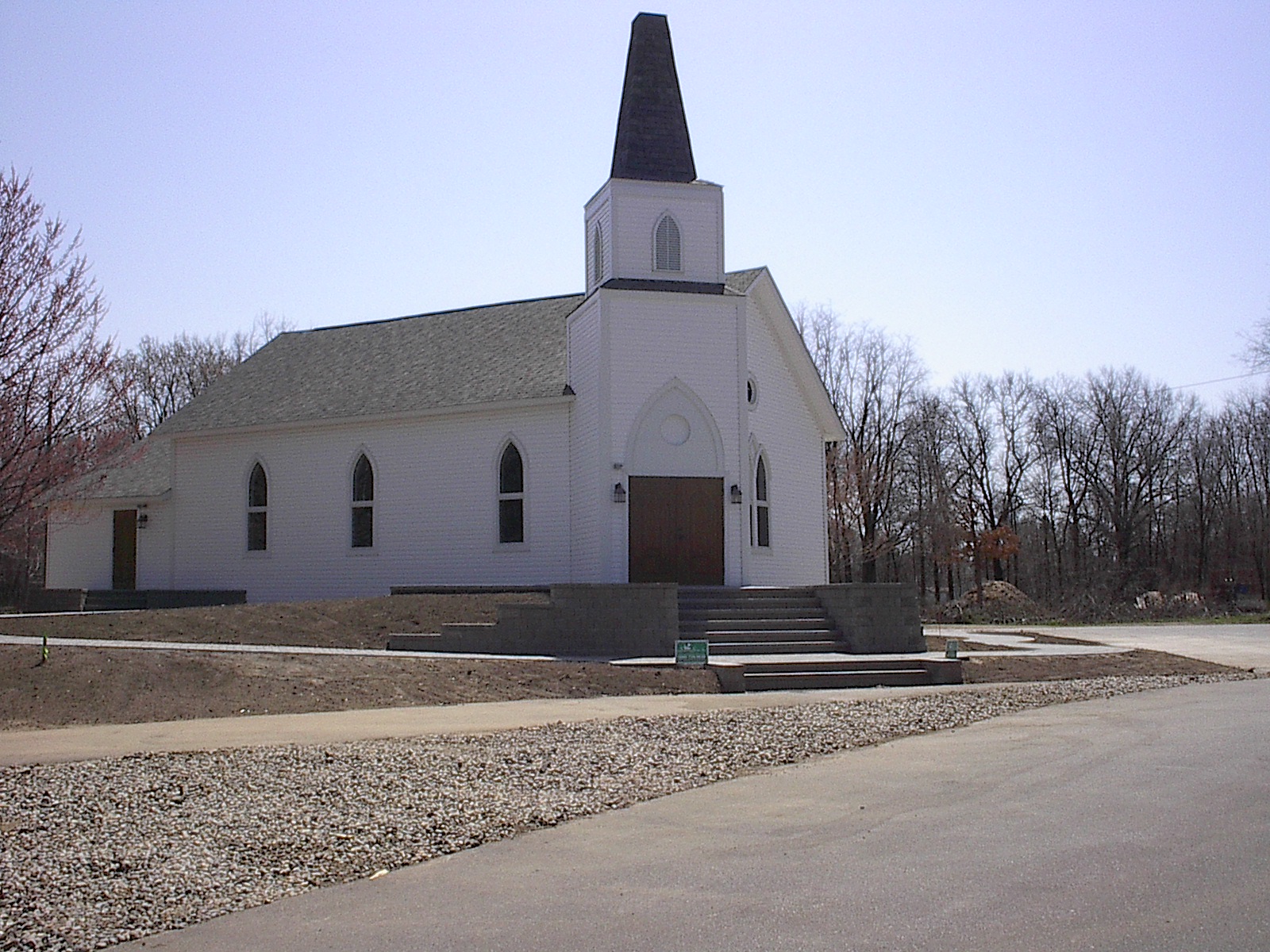|

§ The Hope Chapel was originally known as the Hope United Methodist
Church of Disco, Michigan. It was located on the west side of Van Dyke north of 24 Mile Road. The Hamlet of Disco was platted
in 1849. In 1850 the Disco Academy was built on the southwest corner of Van Dyke and 24 Mile Road.
§ Preserving the historic buildings that exist in
our Township has always been a top priority of the Shelby Township Historical Committee. In August of 1997, the Committee
learned that The Hope United Methodist Church members decided to build a new church. The Historical Committee recognized the
significance of the old building and wanted to preserve it if possible. The Church agreed to donate the building to Shelby
Township if it could be moved off their property located near 24 Mile Road and Van Dyke.
§ Our Township officials, Historical Committee members
and volunteers went to work to devise a plan to save the historic 1890 building. Thanks to the support of Township officials
and others who donated time, money and effort, the building was finally moved to the Township grounds in June of 2001.
§ Moving the building to its new location was only
the first step of many in the process of restoring this structure. The goal of the Township was to restore the building's
appearance to the period of about 1900. However, the entire structure had to be updated to the latest building codes. The
building was strengthened where needed. The roof and steeple were repaired. Electrical, heating and plumbing were updated.
New restrooms were added to the rear of the building.
§ When the restoration was completed, the building
became an activity center for the community. It is currently available for use as a rented chapel for weddings or other suitable
social events. The building, now renamed The Hope Chapel, will continue to serve our community for years to come.
History from 1830:
The intersection of 24 Mile Road (Whiskey Road) and Van Dyke was once the unincorporated Village
of Disco, Michigan. In 1830 the farmers who settled this area from New York referred to it as "Utica Plains." By the late
1840s they wanted a higher education facility similar to the Romeo Institute or the Rochester Academy. In 1849, the same year
the village of Disco was platted, ten acres of land were donated toward the creation of the Mutual Literary Institute. It
was renamed the Disco Academy in 1855.
Religious groups also used the building. The lower floor was used by the school trustees and
the upper floor by the Methodists, who organized in 1863, and later by the Congregationalists.
1890 , The congregation of The Methodist Protestant
Church continued to grow and the upper floor of the Disco Academy was not large enough to contain the flock. The church appointed
a building committee and on September 13, construction started on a new church building at a cost of $1,300. The land, later
known as the Metz farm. was donated by Mrs. Flora Keeler. Flora's parents were Mr. And Mrs. S. Preston of Prestonville. Pastor
Wilber S. Ostrander of the Disco Methodist Protestant Church formally dedicated the new church building on December 20, 1890.
1921 , Electricity was installed. The electrical
lines in the Utica-Disco area were installed in the early 1900s and operated by a number of small electrical companies. In
1916 the small electrical companies were consolidated with the Edison Illuminating Company. It took five
more years before the church was wired.
1927 , The building was raised and re-positioned
on a basement. A new coal furnace was added to heat the building. Previously, a pot
bellied stove, placed at the front of the church where the organ used to sit, was used to heat the building. The new basement
was used for Sunday school classes and social meetings.
1962 , A new 15 x 28 foot addition was added
to the back of the church. The addition consisted of an all purpose room for social affairs or Sunday school, and rest rooms.
Church members had used outdoor facilities until this time.
1979 , The name of the church was changed from
the Disco Methodist Protestant Church to Hope United Methodist Church. By this time the word "disco" had taken on a new meaning
and most people in the area were not aware that the Village of Disco existed here and was the reason for the church's name.
1980 , The old house that sat on the south side
of the church was demolished for more parking spaces. The house was probably first used as a parsonage around 1895 after it
was purchased from the Keeler/Cameron family. When Rev. Simpson (1969-1973) was appointed to the Disco Church, he would not
take the appointment unless the church supplied better living accommodations for him and his family, so the present parsonage
was purchased.
.
Hope Chapel Ready for Community Use
|

